Eight Must-See Spring Birding Sites
For U.S. birders, spring migration can feel like a gift from heaven, as millions of winged visitors descend from the skies. Destined for mating grounds throughout North America and beyond, these birds lend their springtime splendor to nearly every corner of the country.
But that doesn't mean all locations are equal. Geography, habitat, and other factors lend strategic advantage to some areas, making them indispensable for birds and birders alike.
American Bird Conservancy (ABC) and its partners have spent decades conserving and improving habitat at many of these sites. These efforts are a huge benefit for birds, but that's not all: They provide our conservationists with insider knowledge about spring migration in dozens of locations across the country.
Taking advantage of this expertise, we asked field staff to identify eight must-see sites that provide exceptional habitat for migratory birds and unforgettable opportunities for birders. Their choices span most regions in the United States, including overlooked gems and world-famous birding hotspots.
Which is best? That, of course, is a matter of opinion (and endless debate). For that reason, we've arranged suggestions in random order, with equal appreciation for each of these areas that sustain the miracle of bird migration.
Magee Marsh Wildlife Area

Black-throated Blue Warbler. Photo by FotoRequest/Shutterstock.
Where: Oregon, Ohio
What: Nestled on Lake Erie's southern shore, Magee Marsh protects 2,202 acres of Ohio's finest remaining wetlands. In spring, the marsh transforms into a veritable birder's paradise, offering some of the best birding in North America. Things come to a head in early May during The Biggest Week in American Birding, a ten-day birding festival with organized field trips, workshops, and presentations.
Why: Magee Marsh isn't known as the warbler capital of the world for nothing. The Biggest Week is an extraordinary chance to get up close — inches away at times — to a huge variety of migrants. And the music isn't bad either: By the time migrants reach Magee Marsh and surrounding points they are in full song and you'll hear more than a dozen warblers sing.
When: Late April and May are best. This year, The Biggest Week runs from May 3 to 12.
Birds: Lots. Expect to see more than 20 warblers during the course of a day, including Ceruleans, Cape Mays, and Black-throated Blues. You're also likely to spot swans, herons, egrets, thrushes, orioles, vireos, sparrows, and much more. Last year, 255 bird species were observed.
Insider tip: The weather in northern Ohio can be volatile in early May. Hope for the best, but dress for the rest – including snow! — by wearing layers. Birds and birders alike flock to The Biggest Week, so be prepared for crowds, especially along the Magee Marsh Boardwalk.
Nearby birding: Although festival headquarters are located at the Maumee Bay Lodge in Oregon, Ohio, events take place at Black Swamp Bird Observatory, Ottawa National Wildlife Refuge, and Magee Marsh Wildlife Area.
Conservation: ABC's partner, Black Swamp Bird Observatory (BSBO) organizes The Biggest Week and promotes bird conservation by means of research, education, and outreach. BSBO's long-term research projects have helped to develop a greater understanding of bird migration and the habitat needs of songbirds, raptors, shorebirds, and rails. In addition, BSBO data has been used to help both private and governmental landowners better manage their properties for migratory bird species. Funds raised during The Biggest Week are used by BSBO to help restore habitat for migrant species.
Hawk Mountain Sanctuary
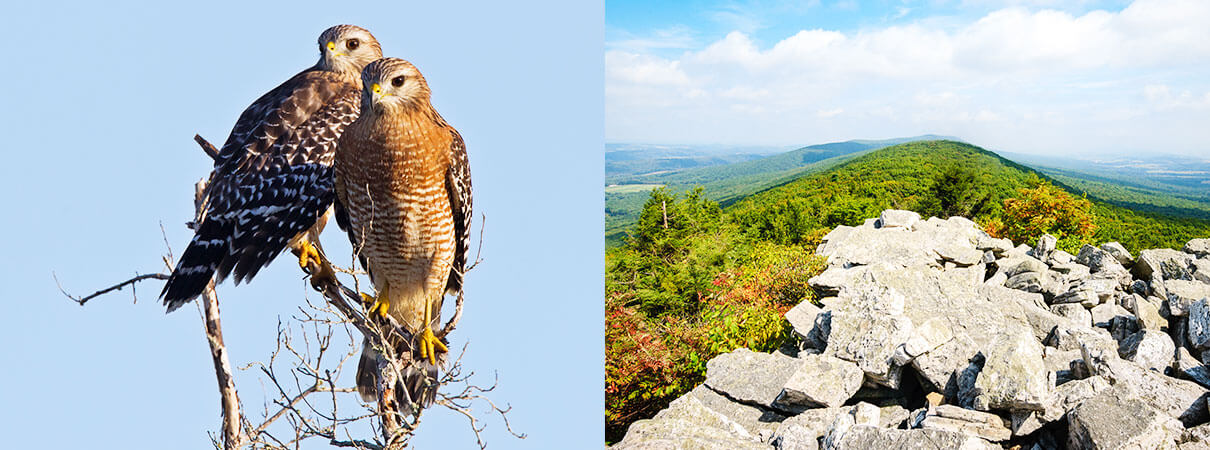
Red-shouldered Hawks and Hawk Mountain vista. Photos (left and right) by Peter Schwarz/Shutterstock and Zack Frank/Shutterstock.
Where: Kempton, Pennsylvania
What: This 2,500-acre protected area is one of the best springtime places to observe migrating raptors. Located high on Pennsylvania's well-preserved Kittatinny Ridge, Hawk Mountain is the world's oldest wildlife sanctuary exclusively committed to the protection and observation of birds of prey. It is also designated as an Important Bird Area.
Why: This is a breathtaking opportunity to observe raptors at eye level from a scenic mountain perch.
When: Late April and early May are peak spring migration season. (For fall, September through November.)
Birds: Hawk Mountain is located within a major flyway for 16 species of migrating raptors. These include: Sharp-shinned Hawk, Cooper's Hawk, American Kestrel, Red-shouldered Hawk, Merlin, Bald Eagle, Golden Eagle, Northern Harrier, and Osprey. Although most people visit Hawk Mountain to see raptors, many other migrants pass through. Among the 140 migratory species observed are the Wood Thrush, Blackburnian Warbler, Scarlet Tanager, and Northern Parula.
Insider tips: Days with north winds are best for viewing spring migrants. Check out Hawk Mountain's guide to migration dates if there is a specific raptor you're hoping to see.
Nearby birding: Middle Creek Wildlife Management Area is a Global Important Bird Area that hosts a large percentage of the Tundra Swan and Snow Goose populations in late winter and early spring.
Conservation: ABC's local partner, the Appalachian Mountains Joint Venture, has collaborated with various organizations to improve habitat for birds such as the Cerulean Warbler on more than 1,000 acres in the Kittatinny Ridge region. Monitoring efforts are currently underway to track this work's progress and hone future management efforts.
Balcones Canyonlands National Wildlife Refuge

Golden-cheeked Warbler and Texas wildflowers. Photos (left and right) by Greg Lavaty and John Starnes/Creative Commons.
Where: Marble Falls, Texas
What: This 27,500-acre wildlife refuge of furrowed hills and canyons in Texas Hill Country affords exceptional springtime birding.
Why: Birding amid the Hill Country's lush wildflower displays is a nature-lover's delight. This refuge is a Global Important Bird Area that offers a unique opportunity to see Endangered Golden-cheeked Warblers and rare Black-capped Vireos on their breeding grounds, along with an impressive assortment of other migrants.
When: Late April and early May are peak times to catch the nesting Golden-cheeked Warblers and Black-capped Vireos in full song.
Birds: More than 240 bird species call the refuge home for part or all of the year, and almost half of these are migratory birds. In addition to the birds mentioned above, you can expect to see the Painted Bunting, Scissor-tailed Flycatcher, Bewick's Wren, and Black-crested Titmouse, among many others.
Insider tips: Be prepared with extra food and water. There are very few, if any, services near the refuge. However, there is a great Texas BBQ restaurant in the town of Burnett. Last, but definitely not least, 2019 is expected be the best year in a decade for wildflowers.
Nearby birding: The greater Austin area, which surrounds the reserve, is dotted with great birding sites. You can find a comprehensive list here.
Conservation: Balcones Canyonlands was established to protect some of the last remaining nesting habitat of the Golden-cheeked Warbler and Black-capped Vireo. ABC's local partner, the Oaks and Prairies Joint Venture (OPJV), supports the reserve in multiple ways. In 2018, the OPJV co-managed with refuge staff a full breeding range population assessment for the Golden-cheeked Warbler. The OPJV has also begun a nest monitoring project for Black-capped Vireos and works with the reserve to assist private landowners in safely using fire as a habitat management tool.
Paton Center for Hummingbirds
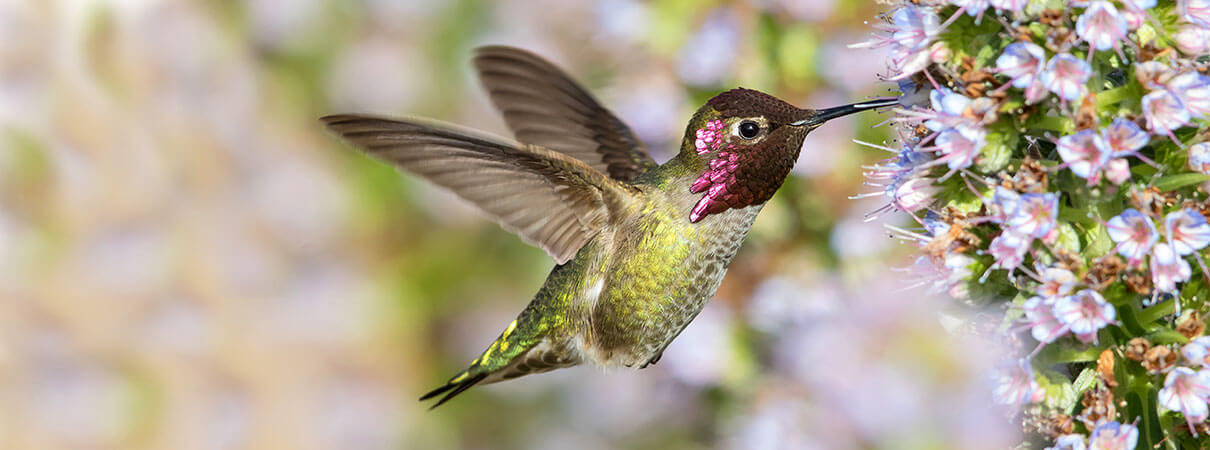
Anna's Hummingbird. Photo by Keneva Photography/Shutterstock.
Where: Patagonia, Arizona
What: Formerly the private residence of Wally and Marion Paton, the Paton Center for Hummingbirds is now managed by the Tucson Audubon Society (TAS). Internationally famed for its winged visitors, the center offers visitors a chance to see a variety of hummingbirds, including the Violet-crowned Hummingbird and other species that are difficult to see within U.S. borders.
Why: This is backyard birding at its best. Feeders in the Center's backyard attract an exciting mix of species, and spring is one of the best times to see hummingbirds. Visitors tend to fall in love with the center, singing its praise.
When: Hummingbird visitors to the Paton Center are at their highest numbers during spring and fall migrations. Visiting between March and May or August and October is recommended.
Birds: Among the 213 bird species recorded at the Paton Center are 15 species of hummingbirds and many other local and migrant species.
Insider tips: Visiting in the late afternoon is suggested, as hummingbird activity tends to peak during this time. The Center's viewing pavilion is shaded, but this is southern Arizona, so don't forget sunscreen and a hat.
Nearby birding: A new .7-mile trail now connects the Paton Center to the Patagonia-Sonoita Creek Preserve. The nearby Patagonia Mountains, which form part of Coronado National Forest, are now an Arizona Important Bird Area and offer opportunities to see the Olive Warbler, Lucy's Warbler, Sulphur-bellied Flycatcher, and Virginia's Warbler.
Conservation: In collaboration with TAS and Victor Emanuel Nature Tours, ABC raised funds to purchase the Paton home and save this unique birding site in 2014. TAS now manages the property for the conservation of southeast Arizona's birds and biodiversity.
Tamarac National Wildlife Refuge
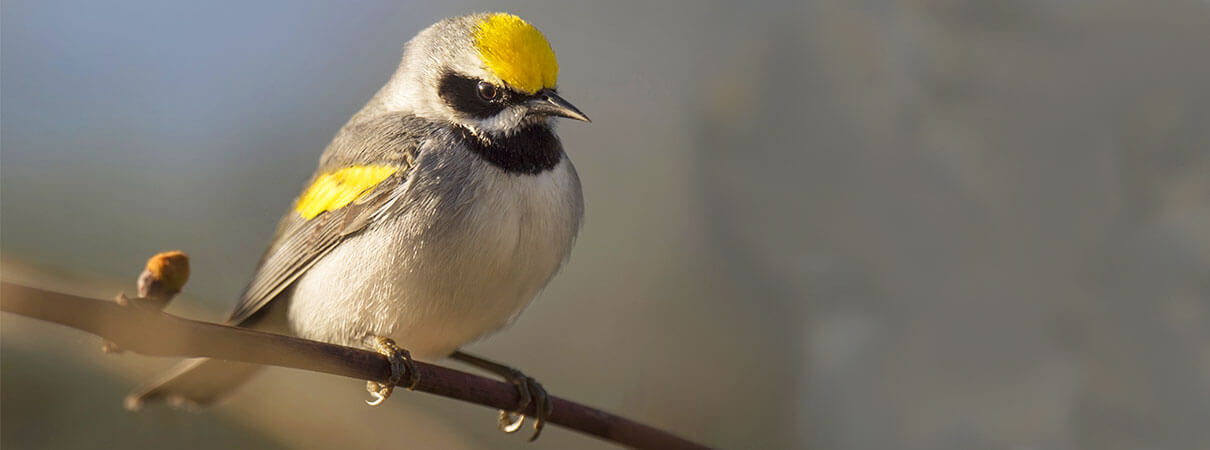
Golden-winged Warbler. Photo by Ray Henessy/Shutterstock.
Where: Rochert, Minnesota
What: Lying in the heart of Minnesota's glacial lake country, the 42,724-acre Tamarac National Wildlife Refuge is a vital breeding ground and sanctuary for resident and migratory birds. The refuge preserves one of the most diverse ecological transition zones in North America and is on the International Pine to Prairie Birding Trail
Why: There are few other places where you can see a prairie wetland species like the Yellow-headed Blackbird and turn around to spot a Red Crossbill of the boreal forest, while listening to the call of an Ovenbird from deep within a nearby deciduous forest. Tamarac also boasts one of the densest breeding populations of Golden-winged Warblers in the world.
When: In spring, mid-May through mid-June is the best time to see the largest variety of warblers, waterfowl, and raptors. It's also a great time for flowers, including Marsh Marigold, Jack-in-the-Pulpit, Wood Anemone, and more.
Birds: More than 250 bird species have been observed in the refuge, including 25 warbler species that arrive each spring. Visitors usually come hoping to see the Golden-winged Warbler, marvel at the large number of Trumpeter Swans, or watch the evening dance of the American Woodcock.
Insider tips: Each spring, serious birders flock to Tamarac and the surrounding area from all over the world for the Detroit Lakes Festival of Birds, which includes guided tours of local birding hotspots and presentations by leading bird conservation experts. In 2019, the event will be held from May 15 to 18.
Nearby birding: Tamarac is 20 miles east of Hamden Slough National Wildlife Refuge, a hotspot for prairie and shorebird species, including the Greater Prairie-Chicken, Marbled Godwit, Killdeer, Common Moorhen, and Greater Yellowlegs.
Conservation: Tamarac was created in 1938 as a refuge and breeding ground for migratory birds and other wildlife. Since 2013, ABC has partnered with the refuge and other public lands agencies in Minnesota to create and maintain breeding habitat for the Golden-winged Warbler, American Woodcock, and other early successional habitat species. These projects have positively impacted more than 10,000 acres.
Greer Spring National Natural Landmark
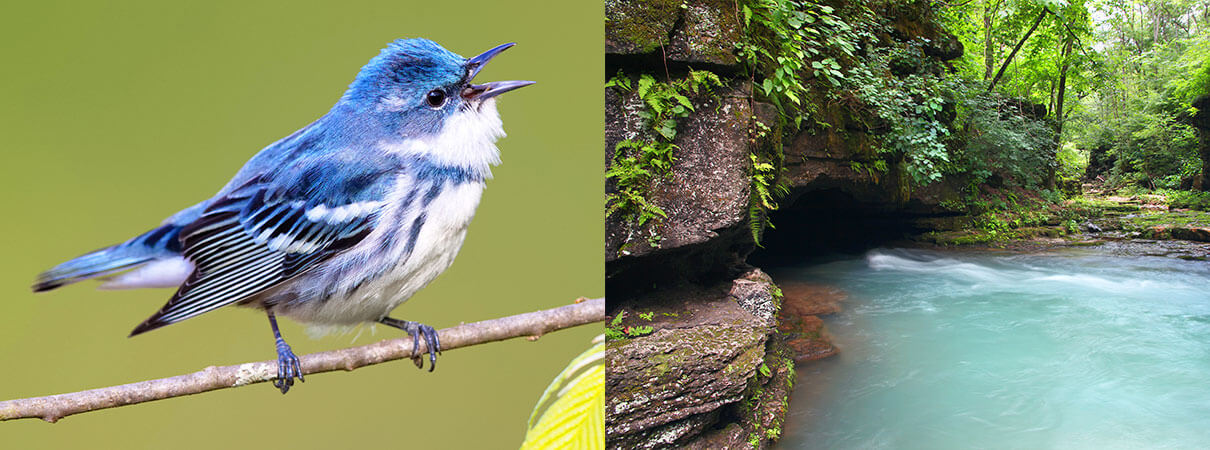
Cerulean Warbler and Greer Springs. Photos (left and right) by Jacob Spendelow and Eifel Kreutz/Shutterstock.
Where: Woodside Township, Missouri
What: Situated within Mark Twain National Forest, this National Natural Landmark is home to the second-largest spring in the Ozarks. Its crystalline waters and mature forest make Greer Spring a favorite of spring migrants, and the site is part of the Great Missouri Bird Trail.
Why: A chance to enjoy the Ozarks' springtime beauty in a cool ravine with ample opportunities to see vireos, thrushes, and warblers.
When: The first two to three weeks of May are best for spring migrants.
Birds: At Greer Spring, 157 bird species have been spotted, including Cerulean, Prothonotary, Swainson's, and Tennessee Warblers; Louisiana and Northern Waterthrushes; Warbling, White-eyed, Red-eyed, and Philadelphia Vireos; and migrating thrushes, including Gray-cheeked.
Insider tip: The Dairy Palace in Alton is a great place to stop for lunch or ice cream. If you're planning a multi-day exploration of Mark Twain National Forest, consider staying at the Greer Crossing Recreation Area campground.
Nearby birding: Surrounding locations on the Great Missouri Bird Trail include: Tingler Prairie Conservation Area, Mudpuppy Conservation Area, Eleven Point National Scenic River, and Cover Prairie Conservation Area.
Conservation: ABC's local partner, the Central Hardwoods Joint Venture, has been working with the Mark Twain National Forest both to support the restoration of over 100,000 acres of pine woodland for priority bird species, as well as to protect breeding habitat for the Cerulean Warbler in the Current River watershed.
Bolivar Flats Shorebird Sanctuary
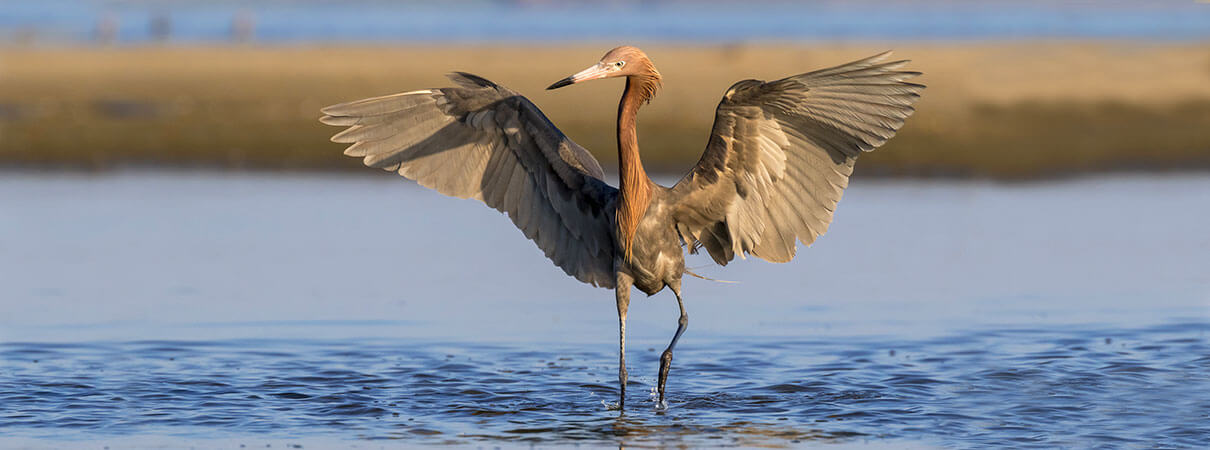
Reddish Egret. Photo by Ivan Kuzmin/Shutterstock.
Where: Port Bolivar, Texas
What: Located at the southernmost point of Texas' Bolivar Peninsula, Bolivar Flats is a dynamic coastal habitat comprised of salt marsh, mudflats, and sandy beach. The sanctuary is managed by the Houston Audubon Society and is a Western Hemisphere Shorebird Reserve Network site and a Global Important Bird Area.
Why: Hundreds of thousands of shorebirds use this sanctuary. In all, more than 300 bird species have been recorded within its boundaries. In spring, birds pour in from Central and South America, making their way north from the Yucatán Peninsula and other parts of Mexico.
When: The last two weeks of April are the best time to view spring migrants, but the migration season lasts from early March to early May.
Birds: During migration and winter, you have a good chance at seeing American White Pelican, Reddish Egret, American Avocet, Black Tern, Royal Tern, Caspian Tern, Common Tern, Forster's Tern, Piping Plover, Semipalmated Plover, Black-bellied Plover, Snowy Plover, Long-billed Curlew, Stilt Sandpiper, Short-billed Dowitcher, Western Sandpiper, Least Sandpiper, Gull-billed Tern, and Black Skimmer.
During breeding season and more or less year-round, Bolivar Flats is home to Mottled Duck, Wilson's Plover, Killdeer, Least Tern, Black-necked Stilt, Willet, Horned Lark, Eastern Meadowlark, and Seaside Sparrow.
Insider tips: Bolivar Flats is glorious when its mudflats are exposed, so try to time your visit during low tide. When the tide is out, large groups, sometimes containing thousands of foraging and roosting birds, gather at the sanctuary. If you want to enjoy a scenic meal along the Intracoastal Waterway, try Stingaree Restaurant and Marina in Crystal Beach. Finally, don't forget: Migratory birds are often exhausted when they reach Bolivar Flats; give them enough distance to rest and forage in peace.
Nearby birding: Bolivar Flats is best for coastal birds, but if you're looking for migrants and hummingbirds, make sure to visit Boy Scout Woods Bird Sanctuary on High Island. The world-famous rookery at Smith Oaks Bird Sanctuary is one of the best and most accessible colonial nesting islands on the Upper Texas coast, where from a safe distance you can look for egrets, herons, ibises, Neotropic Cormorants, and Roseate Spoonbills, which nest there in impressive numbers. Horseshoe Marsh is great for waders, ducks, and rails.
Conservation: The Gulf Coast Joint Venture (GCJV), ABC's local partner, has been working in the area for over 15 years. During this time, they have helped to preserve nearby marshes and make critical habitat improvements. In collaboration with the Houston Audubon Society (HAS), the GCJV monitors bird breeding and protects sensitive nesting areas with signs and fencing. In addition, HAS and GCJV have been working together since 2012 to educate visitors and monitor breeding shore- and seabirds at Bolivar Flats.
Estero Llano Grande State Park
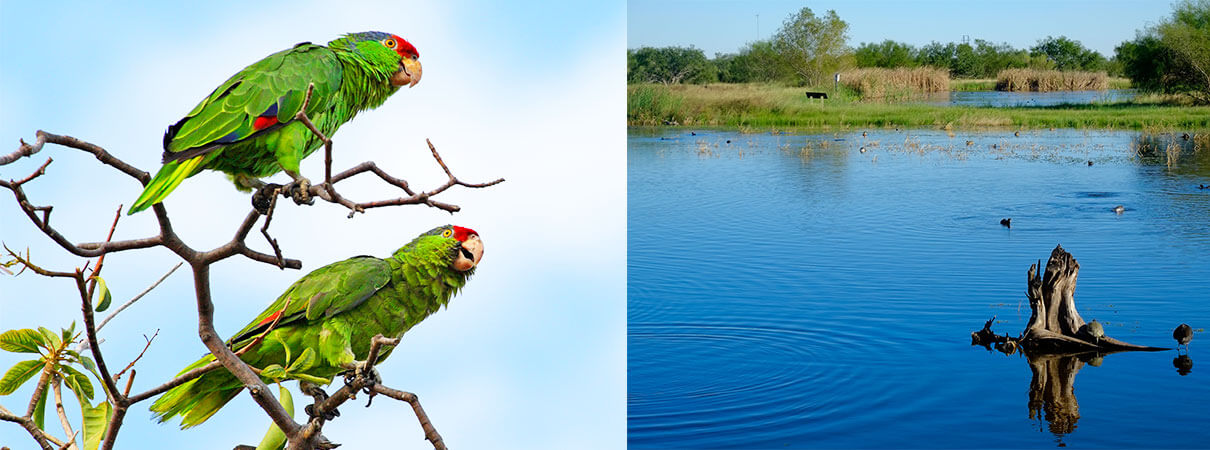
Red-crowned Parrots and Estero Llano Grande State Park. Photos (left and right) by Bowles Erickson/amazonia.us and RW Sinclar/Creative Commons.
Where: Weslaco, Texas
What: This 230-acre park protects wetlands, woodlands, and thorn scrub in the Lower Rio Grande Valley and holds a well-deserved reputation as one of Texas' top birding sites.
Why: The Rio Grande Valley is one of the top birding destinations in the country. Estero Llano Grande offers fantastic springtime viewing of warblers, flycatchers, and orioles, including essentially tropical species that in the United States are only found in South Texas. The park record for most species seen in one day is 133, including 18 warbler species.
When: In spring, migrants peak between mid-April and mid-May.
Birds: A large number of songbird migrants visit, but the park also hosts local specialty birds including rare Red-crowned Parrots, Green Parakeets, Green Jays, Long-billed Thrashers, Altamira Orioles, and Northern Beardless-Tyrannulets. It also attracts a wide variety of migrating ducks, wading birds, and shorebirds, in addition to the woodland species. As an added treat, a nightjar species called the Common Pauraque can be seen at dusk, dawn, and at night.
Insider tips: While some prefer to bird on their own, joining one of the park's weekly bird walks is a good idea for first-time visitors. Typical bird walks result in 50 to 70 sighted species during spring months. If you're interested in seeing the Common Pauraque, ask park staff for help; they know the location of reliable roost sites.
Nearby birding: The 98,000-acre Laguna Atascosa National Wildlife Refuge is the largest protected swath of natural habitat left in the Lower Rio Grande Valley. Designated a Western Hemisphere Shorebird Reserve Network site, the refuge and its partner site in Mexico are visited by more than 100,000 shorebirds annually.
Conservation: ABC and its local partner, the Rio Grande Joint Venture (RGJV), are working with other U.S. and Mexican partners to protect the Red-crowned Parrot. In addition, the RGJV and many other organizations are collaborating in South Texas to improve habitat for grassland birds, pollinators, and other wildlife through the implementation of the Grassland Restoration Incentive Program.


















































